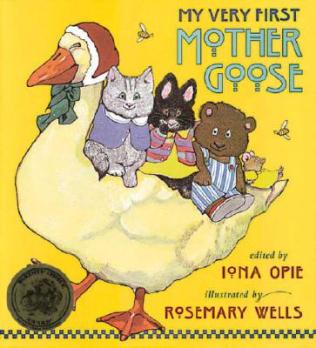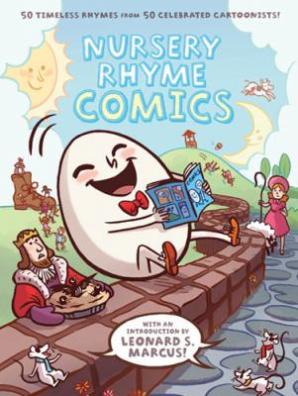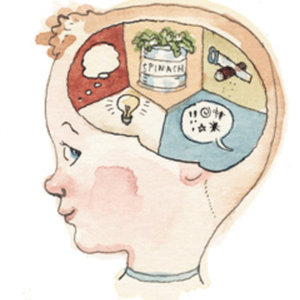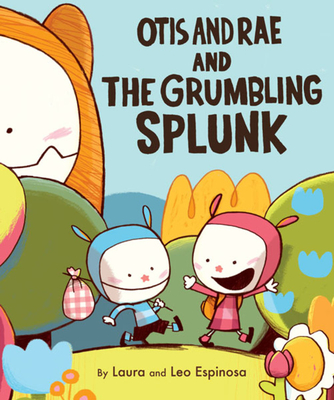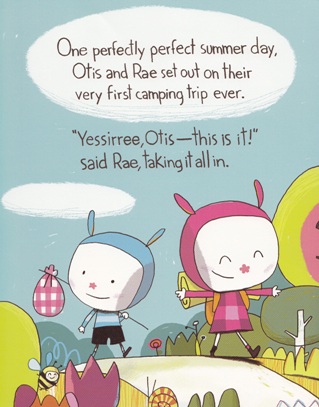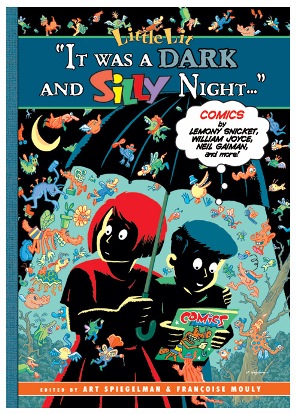If you asked me to look back at my home library experiment so far and identify the one area of children’s literature where I really feel like I dropped the ball, the one area in which I feel that our library has the worst overall coverage, I already know the answer. NURSERY RHYMES. I have completely, completely failed to give my daughter a proper education in nursery rhymes. Why? I’m not totally sure. We have some nice nursery rhyme and Mother Goose collections at home, including a particularly cool one – My Very First Mother Goose – that’s edited by Iona Opie with illustrations by Rosemary Wells (I’d definitely recommend it), but, for whatever reason, we haven’t really read any of them all that much.
I’m not quite sure where my unconscious prejudice against nursery rhymes comes from. Maybe I felt that we had enough sing-songy-type picture books, books that we recited and sang so often that it made up for our lack of reading “Humpty Dumpty” or “Three Blind Mice.” (We used to recite Bill Martin and Eric Carle’s Brown Bear, Brown Bear, What Do You See? on our drive to daycare every morning.) Maybe, as guy who used to edit reference books on children’s literature, I’d read way, way too many academic essays on the historical origins of nursery rhymes and I got it into my head that I didn’t want to have to explain to my kid the socio-political subtext of “stuck a feather in his hat and called it Macaroni.” Maybe I was turned off by the sepia-toned, English nursery illustrations in so many of the Mother Goose collections – with the girls in big frilly dresses and the obscenely cute anthropomorphized animals being so freaking precious all the time. I don’t really know.
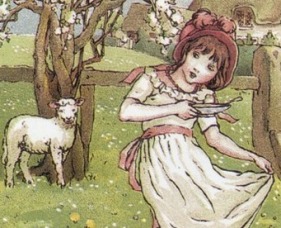
I know Kate Greenaway is a legend of children's illustration, but these dainty, precious nursery rhyme images always turn me off.
In retrospect, it seems so odd to me. Before she was born, I was obsessed with making sure that my daughter had a strong library of fairy tales and folklore. As I’ve mentioned on the blog previously, I made sure that she had to have a “Dad approved” version of Cinderella, Snow White, The Little Red Hen, and so on, even if only so she’d be able to get all the various references to “classic fairy tales” that populate so many modern picture books. (How could she understand the genius of The Stinky Cheese Man if she’d never read The Gingerbread Man first?) But, for frankly stupid reasons, it apparently never occurred to me to make sure that she had the same education in nursery rhymes. Sure, I did buy a few nursery rhyme collections, but I never really pulled them out all that often. And I have no idea why. (Is “nursery rhyme prejudice” a recognized mental disorder?)
To be honest, my daughter got most of her education in nursery rhymes from a “Songs for Kids” CD that my mother bought to play in the car whenever she picked up my daughter for a play-date or sleep-over. While, at first, I found the CD a little obnoxious, it eventually won me over. I hadn’t really thought about how my daughter would eventually learn about “classic” children’s songs like “She’ll Be Coming ‘Round the Mountain” or “Pop Goes the Weasel,” but the CD in Grandma’s car actually did a fantastic job of making her fall in love with a nice mixture of old songs and nursery rhymes set to music. The first time I heard my daughter singing “Ba Ba Black Sheep” to herself – with full knowledge that neither I nor my wife had taught her the song – was both a weird and really wonderful moment.
This long preamble is my way of telling you that I really, really didn’t expect my daughter to like Nursery Rhyme Comics, a 2011 collection of “50 timeless rhymes from 50 celebrated cartoonists”, edited by Chris Duffy. Now that my daughter is five, I thought the window for her enjoying nursery rhymes had passed. I thought that, thanks to my nursery negligence, the rhymes would just be too “baby” and uninteresting for her. And, when we took it out from the library, I was very aware that I was more taking it out for me than for her. I’m a big comics fan and some of my very favorite artists – Scott Campbell, Kate Beaton, Jaime Hernandez, Jules Feiffer, Gene Luen Yang, Tao Nyeu, Tony Millionaire, and more – had contributed to the anthology, so, personally, I just really wanted to read it. I didn’t actually think that my daughter would care that much about it.
Now, long-time readers of my blog can feel me building up to something here. And what I’m building up to is the reveal of the ONE seemingly constant and unchangeable rule of parenting that I never seem to be able to escape. A rule that I’ve referenced over and over again in my book reviews. What’s that rule? The fact that – when I make a parental decision or even when I speak a particularly declarative sentence – I am almost always, always WRONG.
My daughter was intrigued when I checked out Nursery Rhyme Comics from the library and asked me to read her a few of the rhymes at bedtime. I said we’d read five rhymes, expecting that her interest would quickly wane and we’d move onto something else. But we did not read five rhymes that night. We read ALL FIFTY rhymes. TWICE. I was completely unprepared for the sheer, unbridled JOY that Nursery Rhyme Comics brought to my five-year-old. She went NUTS for it. She LOVED it.
Do you want to know how much she loved it? The next day, after I had to read her the whole anthology AGAIN, she asked me, “Do you think Santa will bring me this book for Christmas if I ask him?” For those of you without kids, just FYI, that’s maybe the single greatest endorsement ANY kids’ book can EVER have. That’s like a movie winning 12 Oscars and making a billion dollars at the box office. [read the rest of the post…]
{ 5 comments }
